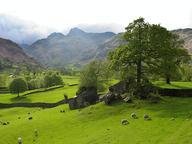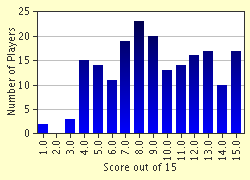Quiz Answer Key and Fun Facts
1. Which of the following is NOT a genuine lake in the English Lake District?
2. One of the principal cultural attractions of the Lake District is "The Theatre by the Lake". Which lake is it nearest?
3. Which Lake District peak has the famous "Striding Edge" as one of its most remarkable features?
4. Which famous poet is buried in St. Oswald's churchyard in Grasmere?
5. What is the name of the best preserved Roman fort amongst the mountains of Cumbria?
6. Windermere is England's longest lake. What is its length?
7. The famous social reformer and art critic John Ruskin lived in a house by the side of Lake Coniston.What is the name of his famous house which can still be visited?
8. Which celebrated children's writer wrote and illustrated many of her books for very young children whilst living at Hill Top Farm at Sawrey?
9. In which town in the Lake District is the Cumberland Pencil Museum?
10. Which ancient monument would you find on the hills just above Keswick?
11. Its water is carried by a 96 mile aqueduct to serve Manchester and district. Which lake was largely created in the 19th century by placing a dam to stop the water flowing out of St.John's Beck?
12. Near which Lakeland town is the beauty spot called Orrest Head?
13. Which two lakes inspired Arthur Ransome to write his famous children's book "Swallows and Amazons"?
14. Which lake has an island that was inhabited by a hermit called St. Herbert and another island that was occupied by a colony of German miners in the 16th century?
15. What is the traditional way in which fields are separated from each other on the Lakeland hills and fells?
Source: Author
Philian
This quiz was reviewed by FunTrivia editor
minch before going online.
Any errors found in FunTrivia content are routinely corrected through our feedback system.


